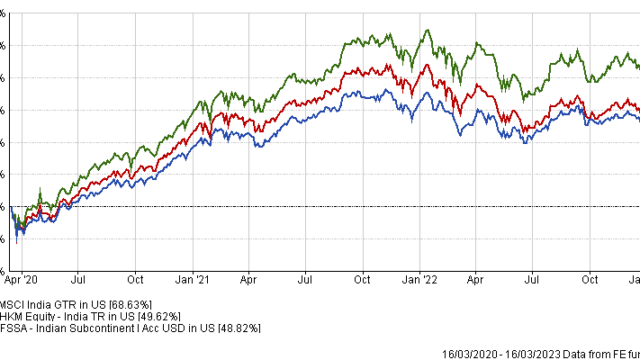As income levels rise in India, Vinay Agarwal, director at FSSA Investment Managers, told FSA that this is throwing up opportunities in consumer discretionary as opposed to staples.
“For example, we prefer Indian air conditioner companies such as Blue Star, which is a small company but is one of the companies with the largest market position,” said Agarwal.
“That is because the penetration of air conditioners in India is very low and the total market size is still a fraction of that in China.”
A third of India’s population now belongs to the middle class, with an annual household income of Rs500,000-Rs3,000,000 ($6,049.2-$36,295.3), according to a survey by Indian think tank People Research on India’s Consumer Economy.
This is compared with only 14% in 2004 and the number is expected to double by 2047.
Agarwal believes that as per capita income increases to around $2,200, the air conditioning industry will hit an inflection point and penetration will grow rapidly after that.
“We owned this company for the last eight to nine years and the price has gone up five times already. I think it can still go up multiple times give where we are today.”
He said that some consumer staples companies will retain their market share even with rising income levels if they have a high penetration level.
For instance, he prefers Colgate, which currently has a market share of over 50% in oral care in India.
Although the current oral care market in India is largely formed by toothpaste sales, he believes demand for toothbrushes, mouthwash and dental floss will grow as income levels increase.
The company also has different product lines with different prices so even when Indians get richer and would like to upgrade the products that they are using, they will still fall under the company’s product umbrella.
The second sector Agarwal identified was financials as he noted that most Indians still do not have a bank account or own an insurance policy.
The banking sector in India has been mostly dominated by state-owned banks, but the lack of efficiency and resources have led to them losing market share over the last few decades.
“The banking sector itself in India is growing faster than the economy and the private sector banks are growing at a rate faster than the vast banking sector.”
As income levels rise in India, the demand for insurance and wealth management services will also increase.
Agarwal manages the FSSA Indian Subcontinent strategy, which allocates 27.4% of its assets to the Indian financial sector.
They include 9.8% to HDFC Bank, 5.5% to Kotak Mhindra Bank and 5.1% to ICICI Bank, which operate in the insurance and asset and wealth management industries through their subsidiaries.
The FSSA Indian Subcontinent strategy vs MSCI India benchmark vs sector average

The fund first launched in August 1999 and has $292.8m in assets under management.
Apart from financials, the fund’s second and third largest allocations are to consumer staples (15.1%) and consumer discretionary (14.9%) respectively.
The FSSA Indian Subcontinent strategy posted a three-year cumulative return of 48.82% over the last three years, compared with the MSCI index average of 68.63% and the sector average of 49.62%, according to FE fundinfo data.

















